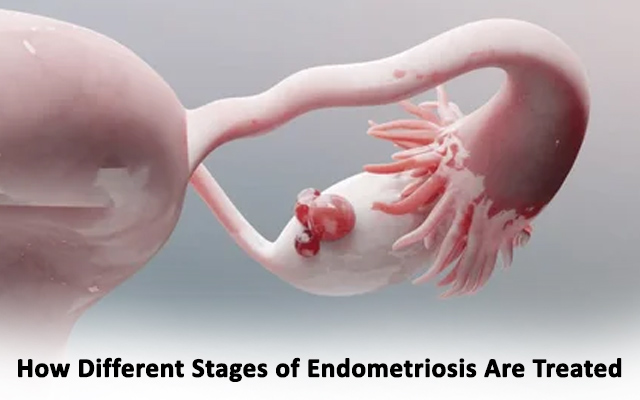Endometriosis is a condition where tissue similar to the lining inside the uterus starts to grow outside of it, causing pain, inflammation, and other symptoms. This condition is categorized into four stages based on its severity.
Each endometriosis stage requires a customized treatment approach to manage symptoms and improve quality of life. Here’s a look at the common treatment options available and which stages they’re best suited for.
1. Stage 1: Minimal Endometriosis
In Stage 1, there are small patches or superficial implants of endometrial tissue outside the uterus, usually without significant scar tissue. For this stage, pain management is often the first line of treatment, with Nonsteroidal anti-inflammatory drugs (NSAIDs), which help to relieve mild symptoms. Additionally, hormone therapy can help regulate the menstrual cycle and reduce endometrial growth.
2. Stage 2: Mild Endometriosis
Stage 2 endometriosis involves more extensive implants than Stage 1, although they are still shallow, and mild adhesions may start to form. Hormone therapy remains a viable option, including oral contraceptives or progestins.
For those who continue to experience pain, a laparoscopy might be considered. This minimally invasive surgery allows the surgeon to locate and remove implants, providing relief from symptoms.
3. Stage 3: Moderate Endometriosis
In Endometriosis Stage 3, there are deeper implants, cysts on the ovaries (and more noticeable adhesions. At this stage, pain can be more intense and persistent. Laparoscopy is often recommended to remove larger implants and cysts and to break up adhesions, which can relieve pain and improve fertility. Along with surgery, hormone therapy may be used post-operatively to manage residual tissue and reduce the risk of recurrence.
4. Stage 4: Severe Endometriosis
Endometriosis Stage 4 is the most advanced form, characterized by deep implants, large cysts, and extensive adhesions affecting multiple pelvic organs. Pain is often severe, and infertility issues are common.
an open abdominal surgery if laparoscopy carries risk of organ injury., an open abdominal surgery that allows more extensive tissue removal for cases where laparoscopy may not be sufficient. In cases of persistent symptoms, hysterectomy (surgical removal of the uterus) might be considered, although it’s generally a last option for those not planning future pregnancies. Oophorectomy (removal of ovaries) may also be combined with hysterectomy to further reduce hormone-driven symptoms.
Conclusion
Endometriosis stages treatments vary widely depending on the stage and individual needs. Consult with the best gynae doctor in Salt Lake, to determine the best combination of treatments, ensuring effective symptom management and improved quality of life.


